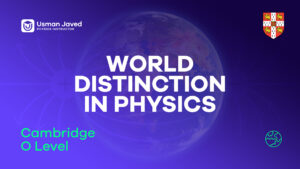About Course
1. Mechanics
Scalars and Vectors
Definition and properties Vector addition, subtraction, and multiplication
Motion and Kinematics
Types of motion (linear, circular, and projectile) Equations of motion Velocity-time graphs and displacement-time graphs
Newton’s Laws of Motion
First, second, and third laws Applications of laws in real-world scenarios
Friction
Types of friction (static and kinetic) Coefficients of friction Laws of friction
Work, Energy, and Power
Work done by constant and variable forces Kinetic and potential energy Law of conservation of energy Efficiency and power
Circular Motion
Centripetal force and acceleration Applications in orbits and real-world problems
2. Properties of Matter
States of Matter
Solid, liquid, and gas properties Changes of state
Elasticity
Stress, strain, and Young’s modulus
Pressure
Pressure in fluids Pascal’s law Archimedes’ principle
Viscosity and Surface Tension
Coefficient of viscosity Surface tension and capillary action
3. Thermal Physics
Temperature and Heat
Heat transfer methods (conduction, convection, radiation) Laws of thermodynamics
Gas Laws
Boyle’s law, Charles’ law, and Ideal gas equation
Thermal Expansion
Linear, area, and volumetric expansion
Specific Heat Capacity
Latent heat Heat transfer in systems
4. Waves and Oscillations
Simple Harmonic Motion
Equations of SHM Energy in SHM
Wave Motion
Types of waves (mechanical, electromagnetic) Wave properties (wavelength, frequency, amplitude, speed)
Sound Waves
Speed of sound in different media Doppler effect
Light Waves
Reflection, refraction, and diffraction Total internal reflection Interference and Young’s double-slit experiment
5. Electricity and Magnetism
Electrostatics
Coulomb’s law Electric field and potential Capacitance and capacitors
Current Electricity
Ohm’s law Resistance and resistivity Kirchhoff’s laws
Magnetism
Magnetic field and flux Ampere’s law and Biot-Savart law Electromagnetic induction (Faraday’s and Lenz’s laws)
6. Modern Physics
Atomic Structure
Bohr’s atomic model Energy levels and spectral lines
Nuclear Physics
Radioactivity and isotopes Nuclear fission and fusion
Quantum Physics
Photoelectric effect Wave-particle duality
What you’ll learn
Show More
Course Content
